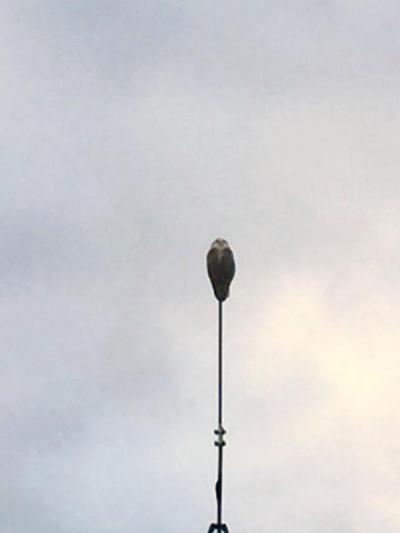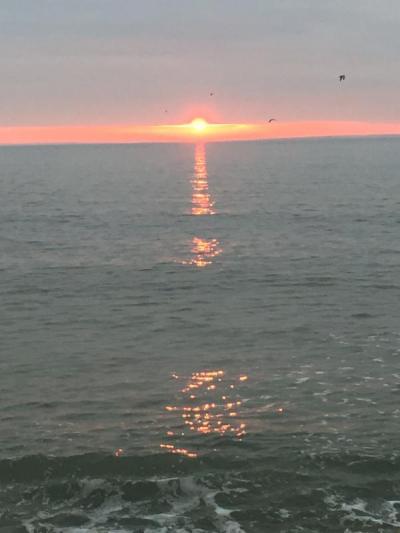Lloyd Center for the Environment Finds Life on Snow-less Landscape for February Winter Walks by Jamie Bogart, Lloyd Center Research Associate
In the early morning hours of February 3, while many were getting sleep in preparation for the Patriots Super Bowl matchup, a handful of folks were out on the prowl, in search of night owls that might be present, and are most active at this insane 3:30am hour. Between this time and sunrise, human activity and wind conditions are both low, and some species become more active toward dawn. This time of year, owls are also highly territorial and vocal as the nesting season looms.
Cloud cover, which reduces moonlight that sometimes subdues owls, no breeze, and seasonable cold made for perfect owling conditions. Lack of snow cover also made for easier walking and quieter feet, a plus for an outing where participants try to remain quiet as to not disturb the owls. One required noise however is the owl call, with taped calls played for Screech, Barred, and Great Horned Owls, the three most commonly encountered “Typical Owls” (Family Strigidae), in hopes of hearing a reply.
The large owls have vast territories and may be far off on the hunt on any given night, such that encountering them is never a guarantee. Sure enough, neither the Barred nor Great Horned Owls, both of which nest on or in vicinity of the Lloyd Center property, were seen or heard. However, on the Parsons property, after a short hike up a hilly trail, a clear callback was heard from a nearby Screech Owl for several minutes, with at least another chiming in. Screeches are rarely seen and seldom heard in the wild in comparison to the larger owls, making this a valuable encounter for participants. And a Screech Owl callback is all but guaranteed for this outing, so the night session was an overall success.
Those hoping to see an owl were not disappointed when the daylight portion arrived. Initially participants were rewarded with a stunning sunrise looking west from the Gooseberry Island causeway. Then after receiving a cue from joggers as to its latest whereabouts, folks saw perched on a tower of the main facility at Horseneck Beach State Reservation, a fledgling Snowy Owl. Each year Snowies winter in the region migrating here from the Arctic, with some years featuring irruptions that bring unusually high numbers of birds. These are owls of open tundra that like perches offering a vast view of surroundings, with this owl having a true “birds-eye” view of the landscape.
On a shorter walk also held at a friendly hour, participants enjoyed the “Winter Wildlife Walk” featuring whatever the winter landscape had to offer. Only remnant snow from a small recent snowstorm cancelled the snow tracking portion, but other features of the landscape were present. Participants learned how different trees might be identified in the winter, including Sassafras with its green stems and lemony odor, large single buds at the end of hickory stems, and a cluster of buds for oak stems. In addition, many remnant bird nests were visible in shrubby undergrowth providing clues as to who and where to songbirds may return in the spring. A beetle was active on a tree, perhaps due to the overall unseasonably warm February we’ve had.
The one vivid sign of life was birds, with attendees getting a great view of a loudly calling Red-bellied Woodpecker, hearing the chorus of Red-winged Blackbirds near the feeders, and hearing and seeing familiar winter residents, including Tufted Titmice which filled the trees. Winter waterfowl were present on the unfrozen estuaries, including on Little River, Canada Geese and American Black Duck, and on the Slocum River, more of a diver assemblage that included Common Goldeneyes and Buffleheads.
Join us next year as we again brave winter in February for more wildlife walks!















